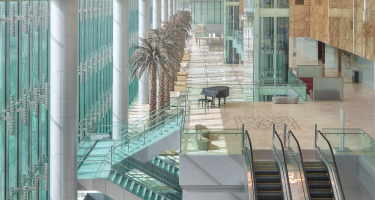Our Doctors
Meet all our doctors at Cleveland Clinic Abu Dhabi.
View Doctors

Measurements of the patient’s eyes are performed to evaluate the thickness, shape, and strength of the cornea. In addition, a complete eye examination is conducted from the front (tear film) to the back (retina) of the eye. An optometrist also assesses the patient’s current glasses prescription. Several specialized, noninvasive diagnostic techniques may be used:
After these tests, the caregiver discusses with the patient which laser vision surgery would be most beneficial.
The Laser Vision Correction Service at Cleveland Clinic Abu Dhabi’s Integrated Surgical Institute offers a full range of options for vision correction. Laser vision correction options include:
The Laser Vision Correction team makes use of the latest technology, including a femtosecond laser refractive suite, the top technology in the world for laser vision correction, to offer the best treatment available to patients.
As with any eye procedure, patients need to arrange for transportation home after laser vision correction surgery.
Caregivers at the Integrated Surgical Institute are highly experienced in working with patients to find the best procedure to restore their vision and performing cutting-edge surgical procedures.
Caregivers involved in patient care for this service include: